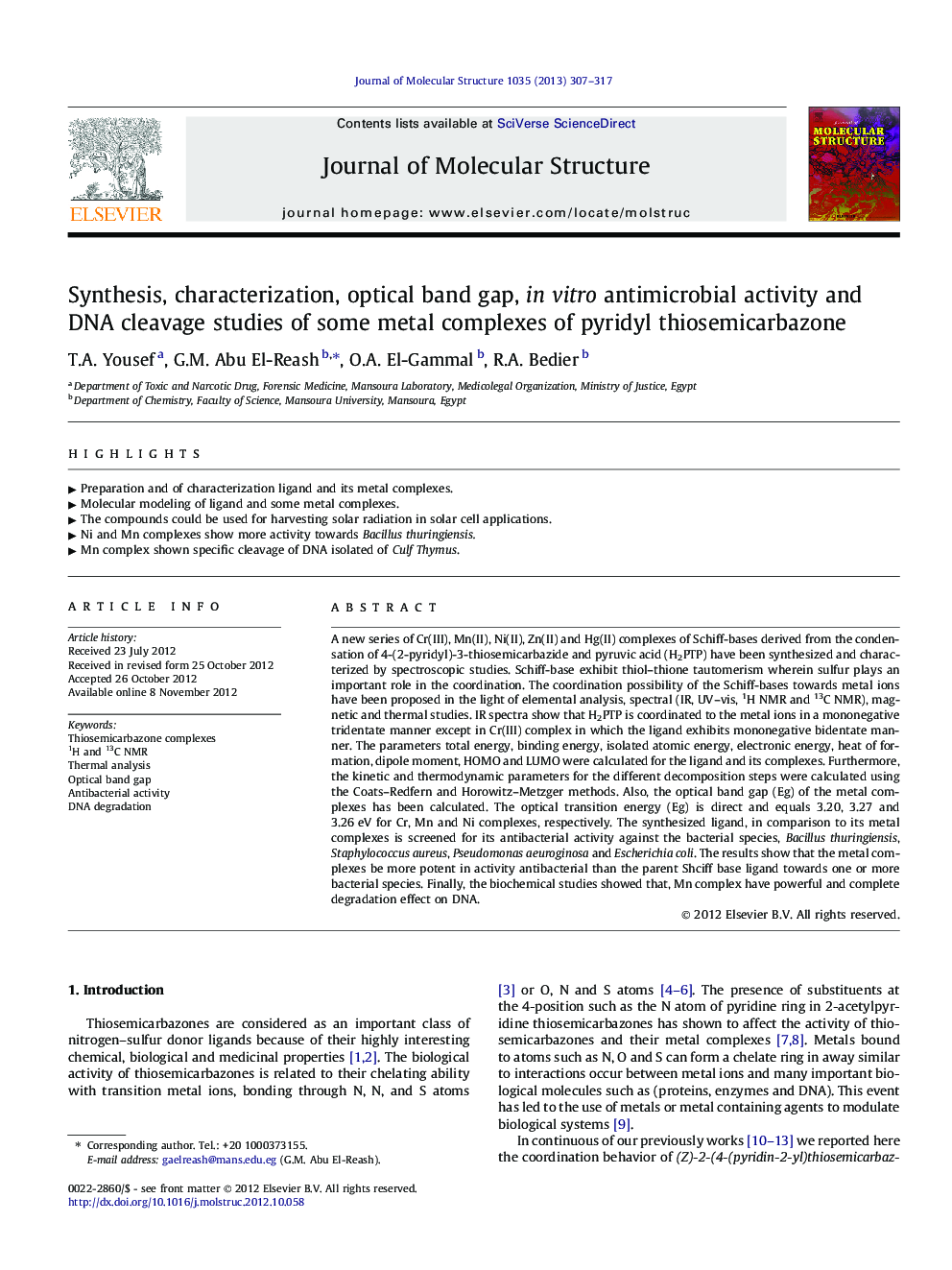| کد مقاله | کد نشریه | سال انتشار | مقاله انگلیسی | نسخه تمام متن |
|---|---|---|---|---|
| 1403177 | 1501779 | 2013 | 11 صفحه PDF | دانلود رایگان |

A new series of Cr(III), Mn(II), Ni(II), Zn(II) and Hg(II) complexes of Schiff-bases derived from the condensation of 4-(2-pyridyl)-3-thiosemicarbazide and pyruvic acid (H2PTP) have been synthesized and characterized by spectroscopic studies. Schiff-base exhibit thiol–thione tautomerism wherein sulfur plays an important role in the coordination. The coordination possibility of the Schiff-bases towards metal ions have been proposed in the light of elemental analysis, spectral (IR, UV–vis, 1H NMR and 13C NMR), magnetic and thermal studies. IR spectra show that H2PTP is coordinated to the metal ions in a mononegative tridentate manner except in Cr(III) complex in which the ligand exhibits mononegative bidentate manner. The parameters total energy, binding energy, isolated atomic energy, electronic energy, heat of formation, dipole moment, HOMO and LUMO were calculated for the ligand and its complexes. Furthermore, the kinetic and thermodynamic parameters for the different decomposition steps were calculated using the Coats–Redfern and Horowitz–Metzger methods. Also, the optical band gap (Eg) of the metal complexes has been calculated. The optical transition energy (Eg) is direct and equals 3.20, 3.27 and 3.26 eV for Cr, Mn and Ni complexes, respectively. The synthesized ligand, in comparison to its metal complexes is screened for its antibacterial activity against the bacterial species, Bacillus thuringiensis, Staphylococcus aureus, Pseudomonas aeuroginosa and Escherichia coli. The results show that the metal complexes be more potent in activity antibacterial than the parent Shciff base ligand towards one or more bacterial species. Finally, the biochemical studies showed that, Mn complex have powerful and complete degradation effect on DNA.
► Preparation and of characterization ligand and its metal complexes.
► Molecular modeling of ligand and some metal complexes.
► The compounds could be used for harvesting solar radiation in solar cell applications.
► Ni and Mn complexes show more activity towards Bacillus thuringiensis.
► Mn complex shown specific cleavage of DNA isolated of Culf Thymus.
Journal: Journal of Molecular Structure - Volume 1035, 13 March 2013, Pages 307–317